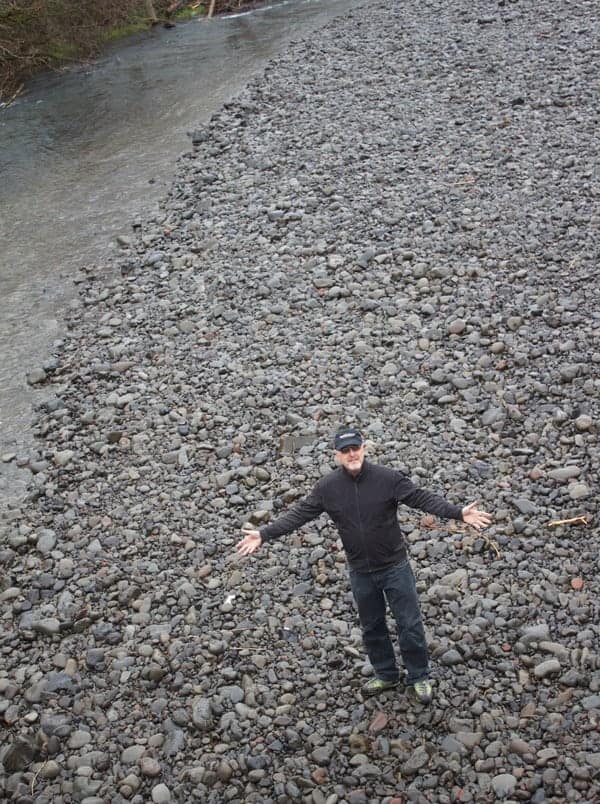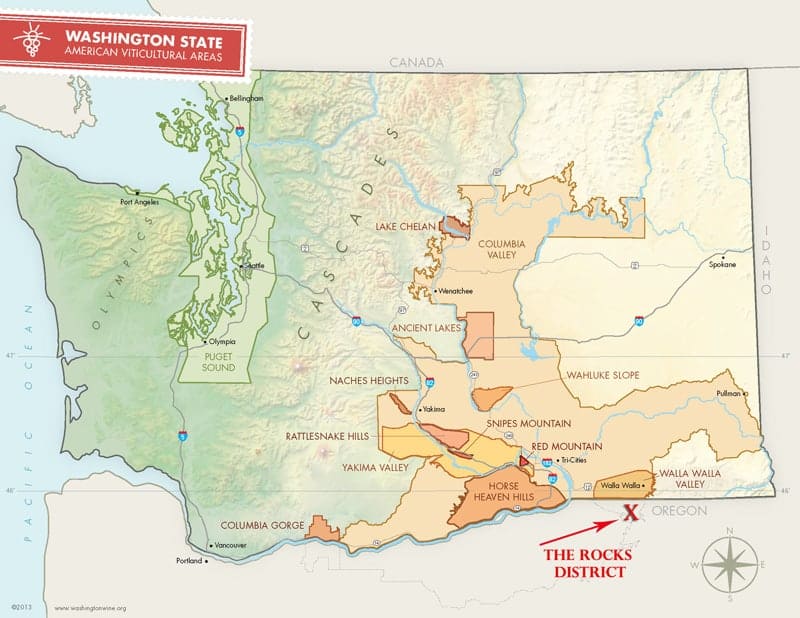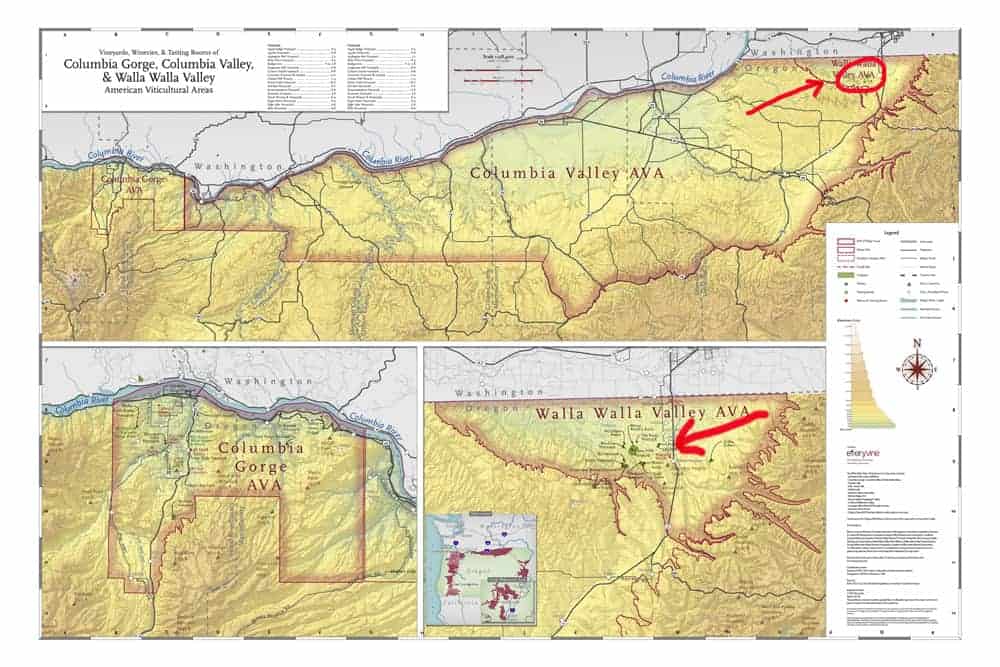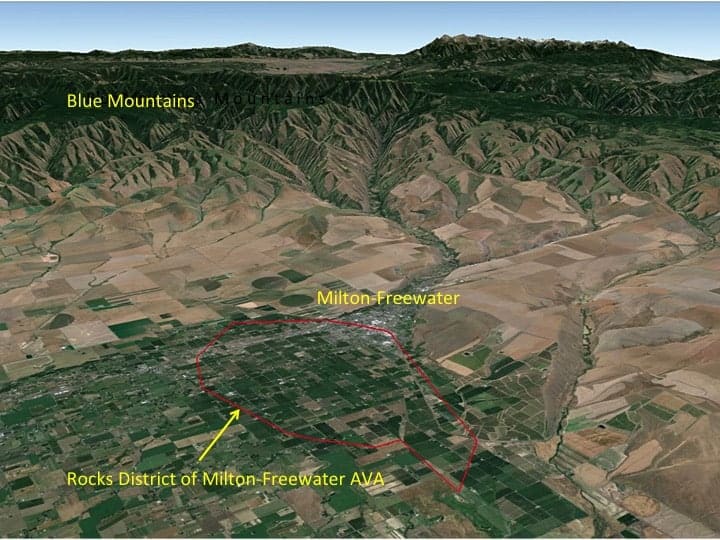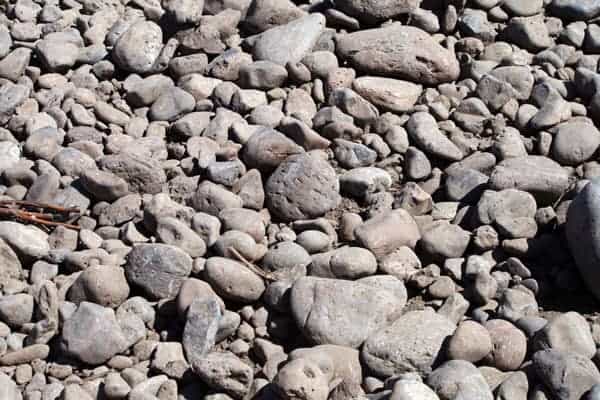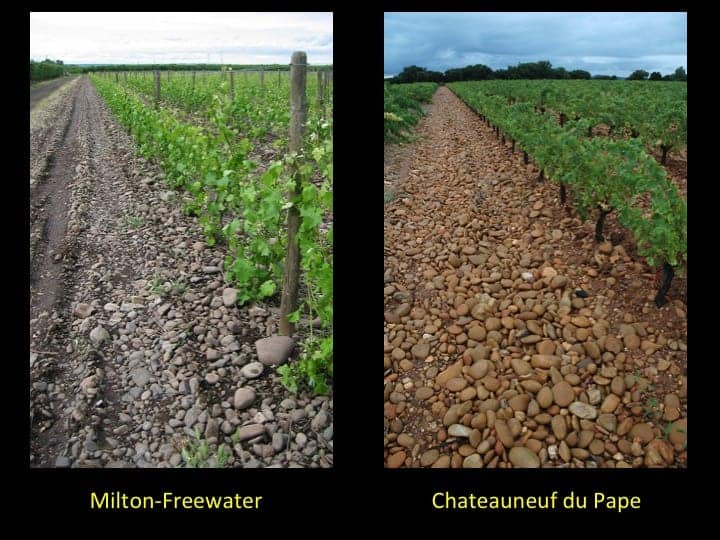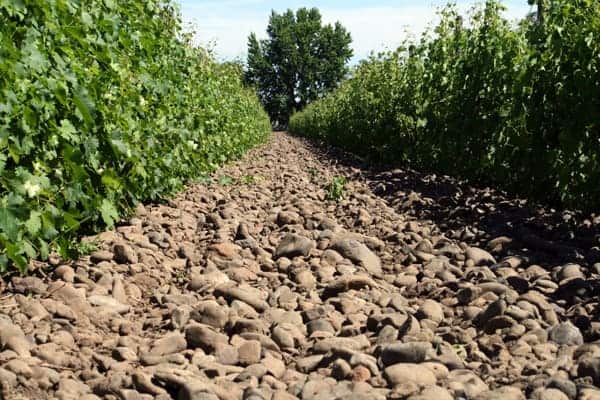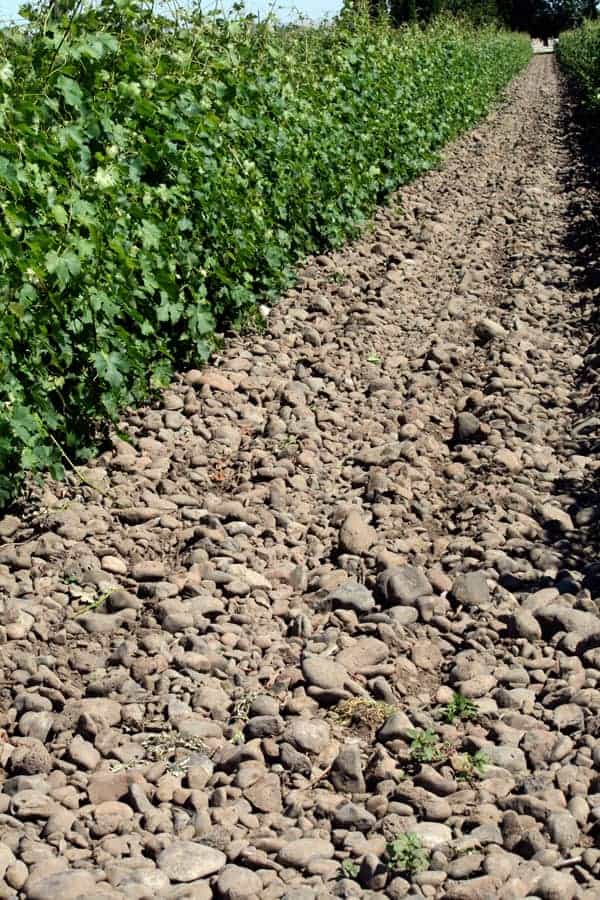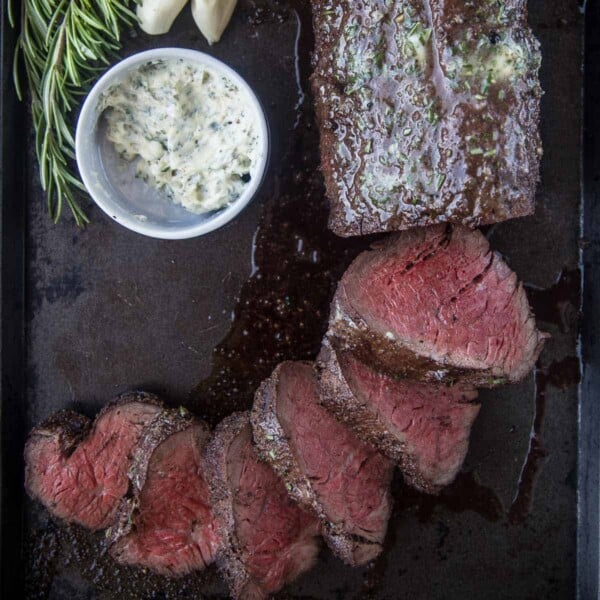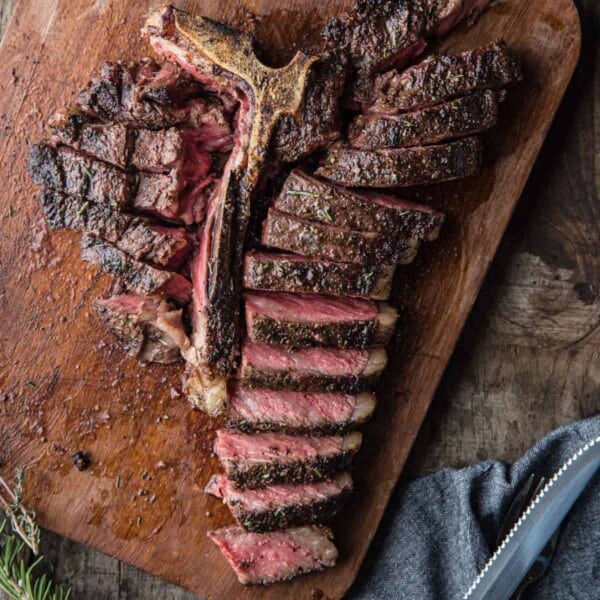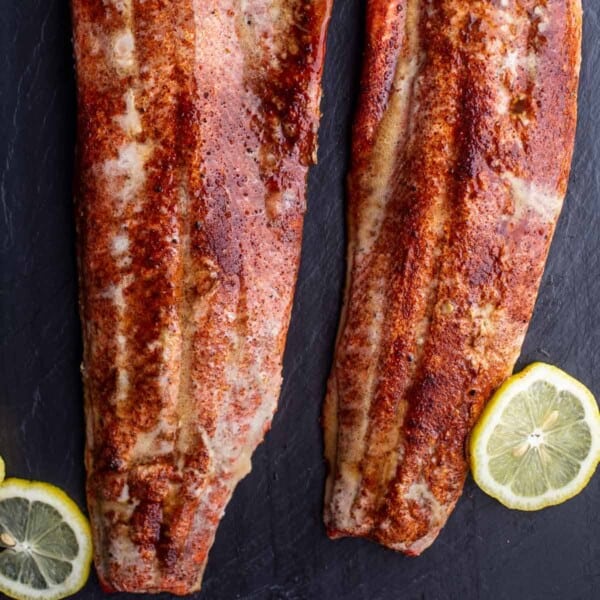Oregon AVA Spotlight – The Rocks District of Milton-Freewater
May 12, 2015, Updated Mar 12, 2025
This post may contain affiliate links. Read more at our disclosure policy.
Geology freaks get excited. There’s a new-ish wine region in Oregon, and it’s not what you think. Though the region is technically 100% located in Oregon, you won’t find your typical Oregon wines here. Meaning no Pinot Noir or Pinot Gris. Instead, you’ll find bold reds, like Syrah, Cabernet Sauvignon, Tempranillo, among a few others. And the vineyards are like nothing you’ve seen before in the Pacific Northwest.
Dr. Kevin Pogue standing, literally, in the rocks of The Rocks District of Milton-Freewater
The Rocks District of Milton-Freewater
View of The Rocks District AVA from the Washington side
As it looks on the map, this small region (less than five square miles) is located just a few miles south of the OR/WA border, and approximately fifteen minutes south of the town of Walla Walla, Washington. This American Viticultural Area (or AVA) lies within the well-known Walla Walla Valley AVA, which lies within the larger Columbia Valley AVA. The later two regions are shared between both Oregon and Washington, and both of those two AVAs can be used for wineries in both states. The Rocks District, however, lies entirely within Oregon.
This 3,770-acre region became Oregon’s 18th AVA this past February.
View of The Rocks District from the Oregon side
The The Rocks District of Milton-Freewater AVA is situated on an alluvial fan of the Walla Walla River, where the river exits the Blue Mountains. Dr. Kevin Pogue, a geology professor at Whitman College and author of the AVA proposal, explains, “An alluvial fan is where a river has dumped a big load of gravel on the land.”
Image provided by Dr. Kevin Pogue
This gravel is essentially what is known as “The Rocks.” And only vineyards that have this gravel are considered within the AVA boundaries.
This region gets its name from these distinguishing soils, which consist of large softball-sized dark-colored basalt cobblestones. This well-drained soil type encourages vines to grow deep, allowing the vines to warm quickly and radiate heat, and also contributes to distinct characteristics found in the wines from here.
There’s really nothing like this anywhere else in the Northwest, and probably the entire country.
Would you like to save this?
History of The Rocks region
Though this region has a long history of agriculture (cherries, apples, plums, among others), The Rocks District of Milton-Freewater, as it pertains to vineyards, was discovered almost by accident. Back in 1996, Christophe Baron of the famous Cayuse Vineyards was traveling through the area, with plans to move to the Willamette Valley to grow Pinot Noir, when he stumbled upon this rocky terrain. Reminding him of the famous soils of Châteauneuf-du-Pape in France (Baron’s native country), he decided to stay and plant a vineyard.
Châteauneuf-du-Pape in France’s Rhône Valley is also famous for cobblestones that cover the ground. The vineyard on the left, planted in The Rocks District, looks eerily similar. (image provided by Dr. Kevin Pogue)
People thought he was crazy for planting here, but he did anyway despite discouraging feedback. And it has paid off as his wines have won oodles of awards and top scores from all major wine mags. In fact, you can now only get his wines through allocation. Upon seeing Baron’s success, other wineries quickly followed suit and began planting.
Though wineries on both sides of the border have vineyards planted in The Rocks, not all of them can use the name on their labels.
So, who can use this AVA designation?
Wines from this area have been winning awards and accolades for years. But until now, you’d probably only recognize them with the Walla Walla AVA, or the larger Columbia Valley, on the label. And you’d probably only associate them with Washington State wines, not Oregon where the fruit is actually grown.
Currently nineteen producers make wine from The Rocks District fruit, but not all can use the designation on their label. Because of federal laws, Washington wineries are not permitted to use the AVA on their label unless they have winemaking facilities in the state of Oregon (even though several Washington based wineries own vineyards or source fruit from this region for their wines). This may change soon, however, as there are proposals to reconsider this restriction.
The Wines
The distinguishing feature of the wines here have a noted savoriness. Descriptions of the wines often include, “savory, meaty, bacon fat, earthy, and funky,” among others. And y’all know I Iove me some savory wines. I’m talking wines that, when you put them in your mouth, get your salivary glands working and you suddenly begin to think about things like salami, pork, juicy meats, and other savory foods.
Some wines to check out from this region:
- Dusted Valley 2013 Tall Tales Syrah. 100% Syrah | $60
- Saviah Cellars 2010 The Funk Estate Syrah. 95% Syrah, 5% Viognier | $55
- Tertulia Cellars 2012 Estate Reserve GSM. 66% Grehache, 24% Syrah, 10% Mourvedre | $55
- Sleight of Hand Cellars 2013 Psychedelic. 100% Syrah | $60
- Skylite Cellars 2012 Skylite Cellars Syrah. $100$ Syrah | $32
- Cayuse Vineyards 2012 Cailloux Vineyard Syrah (if you fan find it that is!). 95% Syrah, 5% Viognier | $80-$150
Next time you’re shopping for wine, ask your wine steward if they have any wines from The Rocks District, or order direct from the winery. Let me know what you think.
